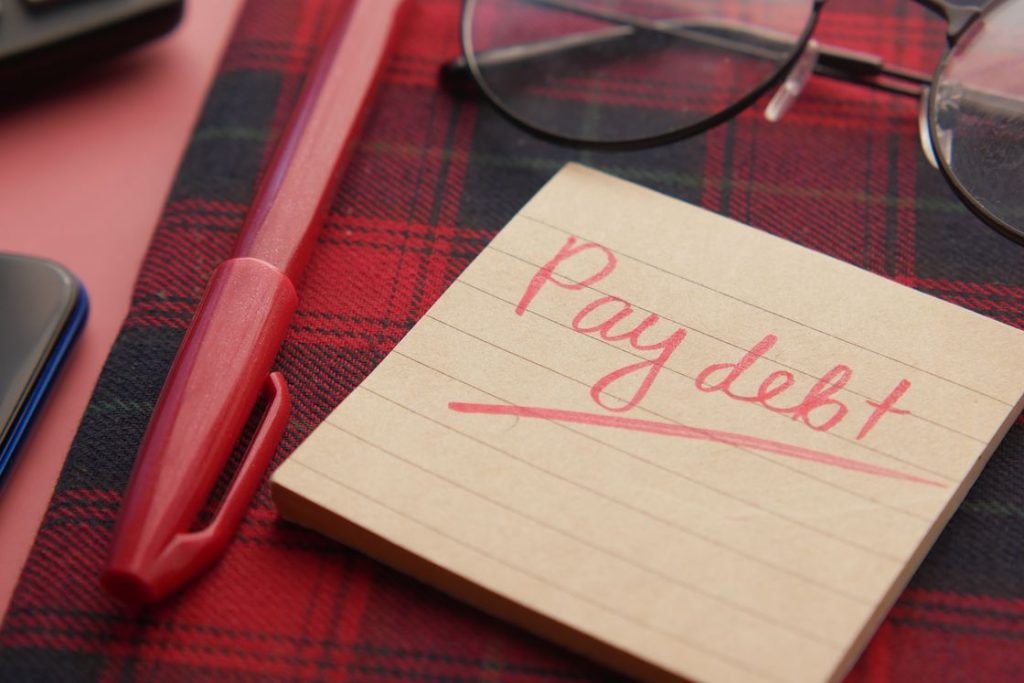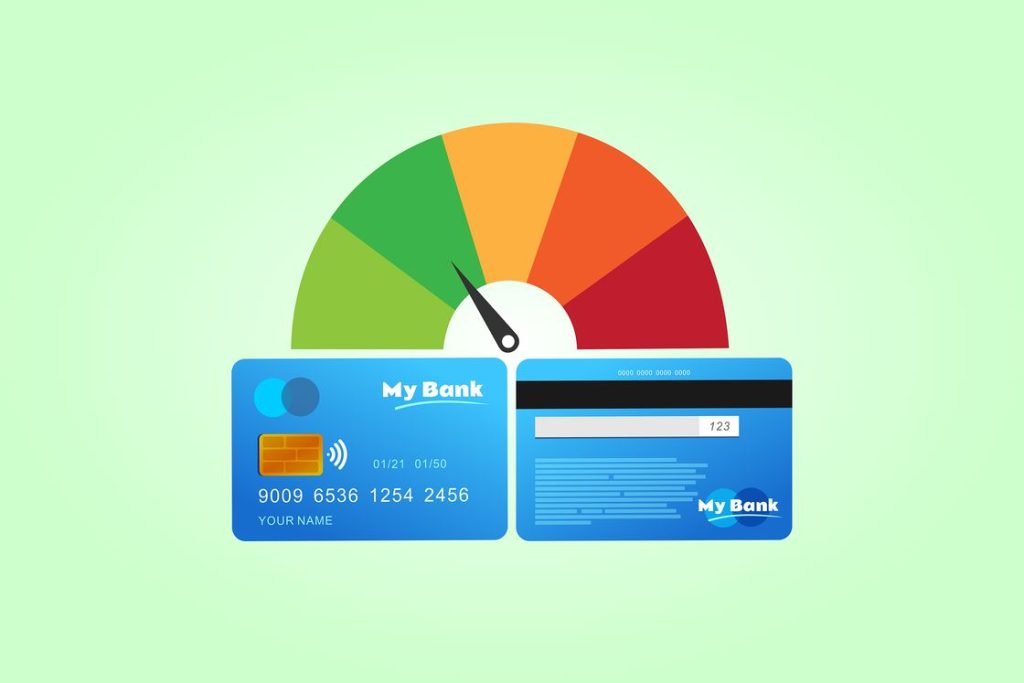Are you navigating the financial maze and needing a boost in your credit score? Whether faced with challenges or seeking proactive steps, I’m here to help. Join me as I unpack actionable tips, ensuring your credit’s best foot forward.
A Quick Overview Of Your Credit Score
Before I dig into ways that you can improve your credit score, let’s discuss a few of the basics.

How Credit Scores Work
Once again, you probably already know why building credit is so important. Your credit report is perhaps the single most important factor when you go to take out a loan, lease an automobile, rent an apartment, or seek pre-approval for a mortgage. In each of these scenarios, your prospective lender will require access to your credit report.
This report will provide the lender with information about your credit score, overall debt, payment history, and credit history.
All of these factors will be weighed when determining your eligibility for certain transactions or loans. Likewise, should you be approved for a loan, your credit history will dictate just how favorable your terms of repayment are, including your interest rate and any applicable fees.
The lower your credit score, the more “high risk” you will be considered as a borrower. This may result in higher interest rates and other restrictions on your repayment terms.
The higher your credit score is, the more likely you are to be viewed as an ideal candidate for loan repayment. This will give you more leverage, a wider range of offers to choose from and, ultimately, more favorable repayment terms and a lower interest rate.
Credit Reporting Agencies
The outlook here can get a little complicated. That’s because there are a few different types of credit scores in circulation. The most common credit score is your FICO score. The term “FICO score” is often used interchangeably with “credit score.” This is because FICO has been the leading credit scoring agency since 1956.
However, in 2006, the major credit bureaus–Experian, Transunion, and Equifax–joined forces to create VantageScore. The objective was to provide a competing agency for credit scoring.
Today, the primary differences between your FICO score and VantageScore are the ways in which each agency weighs specific factors when calculating your score. Specifically, FICO tends to provide a more current snapshot of your credit payment outlook, whereas VantageScore provides data which places a heavier emphasis on payment history and credit history.
The Credit Score Range
Both FICO and VantageScore yield credit scores ranging between 300 and 850, with 850 being the highest possible credit rating. Your score dictates where your credit rating falls between “bad” and “excellent.”
This designation can have a direct impact on both your eligibility for certain transactions and the terms under which said transactions will be made. Again, higher credit scores usually mean more favorable repayment terms including lower interest rates. The following are the common credit rating designations and the correlated score ranges.
- Bad Credit Score: 300-549
- Poor Credit Score: 550-619
- Fair Credit Score: 620-679
- Good Credit Score: 680-739
- Excellent Credit Score: 740-850

While credit card users who have poor credit can limit their spending flexibility, it is possible to improve your credit score over time by avoiding missed payments, making on-time payments, reducing your credit utilization, and paying off high credit card balances.
All of this is to say that anything less than a good or excellent credit score can stand in the way of your financial goals. So before that next credit report catches you off guard, make sure you take all appropriate steps to improve your credit score.
Still, it’s important to be realistic about the pace of credit repair. It can take a while to improve your credit score.
How Long Does It Take to Improve Your Credit Scores?
The answer to this question depends on a number of factors including the total sum of your debt versus your total credit limit; the various types of accounts carrying debt; the length of your credit history; and perhaps most importantly, the presence or absence of any negative reports on your credit score.
This last factor is particularly consequential because negative reports can remain visible on your credit report for many years. Negative reports include delinquent accounts, past or present, accounts in collections, and any history of late or missed payments.
While you can improve your credit score relatively quickly by paying down debts and reducing your credit card utilization, it will generally take longer to make improvements if your report does include negative reports.
Capital One notes that “most negative information can remain on your reports for up to seven years. And certain types of negative information can stick around for even longer. For example, lawsuits and judgments can stay on your reports for more than seven years. And bankruptcies might appear on your reports for up to 10 years.”
This means that it could take a while to see dramatic improvements in your credit score. But if you take the steps outlined below, you will see gradual improvements that will not only raise your credit rating but will also lead to major improvements in your overall financial outlook.
10 Tips for How To Improve Your Credit Score
1. Review Your Credit Reports
The first step toward improving your credit score is actually knowing what your credit score is! If you haven’t been keeping track of your credit, this should be your starting point. Capital One advises that “A good first step is requesting a free annual credit report from each of the three major credit bureaus: Equifax®, Experian® and TransUnion®. If there are errors on your report, they could negatively affect your credit score.”
There are tons of great sites providing free credit reports such myFico.com, which offers data from all three credit bureaus, and Credit Karma, which includes reports from TransUnion and Experian. Create an account and get on top of your credit outlook right away.
You’ll see your credit score with multiple credit bureaus and you’ll have a chance to review your full payment history across all past and present credit card accounts. This is also where you’ll see if you have a history of late or missed credit card payments. Generally speaking, this is a chance to see your total credit mix all in one place.
This should give you a more comprehensive understanding of how various factors are likely impacting your overall credit score.

It’s also worth noting that many of these credit report sites and services provide helpful advice tailored to your exact situation. This might include educational tips for improving credit card habits, direct links to credit card company offers that might help you consolidate your debt or access to private loan offers that might allow you to reduce all of your monthly payments into a single bill.
So if you are just at the beginning of your credit score repair journey, getting a free credit report from the right service can get you off on the right foot.
2. Dispute Any Inaccurate Claims on Your Report
As noted, there’s a lot you can do once you’ve gained access to your full credit report. Now that you have all this information in front of you, it’s time for some fact checking! The most important thing you can do at this stage is review your credit history in full. Make sure every shred of information is accurate.
Capital One points out that you have a right to dispute any inaccuracies that might appear on your credit report. This is important for a number of reasons. First, you’ll want to be sure that there are no inaccurate claims against you. Be sure that any settled debts are marked as such and that any discharged accounts do not still appear to carry debt.
Likewise, you’ll want to be sure that none of your accounts have been sold to unscrupulous collections agencies, the kind that might continue collection efforts even on debts which have been satisfied. Be assured, these shady companies do exist!
And finally, this kind of fact-checking is a critical way to identify instances of identity theft or fraud involving your accounts. Are there credit card accounts that look unfamiliar? Charges that you don’t remember making? Debts that you were unaware of? These could all be signs that your identity and credit accounts have been compromised.
In short, if there’s anything on your report that looks wrong, you can usually file your dispute directly through your new credit report service. Make sure that, as a starting point on your journey to healthy credit, you address anything on your report that isn’t correct. While others may make mistakes, it is entirely up to you to fix them.
3. Track Your Progress
Now that you’ve created an account that gives you regular access to your credit report and credit score, it’s important to stay on top of your progress. As you pay down your debts and reduce your credit utilization ratio, you will likely improve your credit score over time. Use this portal to keep a close eye on your progress.
Just as importantly, signing into your free credit report regularly will put you in a better position to identify and address any inaccurate information or improper use of your accounts. To reiterate a point from the section above, a free credit report can often provide red flag warnings in the event of a security breach or identity theft.
Likewise, by regularly monitoring your credit score, you’ll be in a position to spot misuse of your accounts quickly. This may allow you to remedy misuse of your accounts before the identity thief can invade your bank account, damage your credit rating, and cause your personal finances to spiral out of your control. Not to frighten you, but this is an actual thing that can really happen.
Hopefully, signing into your account regularly to view your credit score can be the beginning of a healthier and more proactive relationship with your debt and spending.
4. Handle Overdue Bills First
Your free credit report gives you a full accounting of all your debts, including any missed or late payments, past due accounts, and accounts in collections. It’s important that you take steps to address these issues right away. You can’t begin to repair your credit rating until you’ve removed any debts that might be dragging your score down.

Prioritize aggressive payment of these debts, as failure to do so will cause you to continue racking up negative marks on your credit. Begin with those debts that might be in collections and work your way through any credit accounts which may not be in good standing.
You may also want to identify those credit card accounts that carry a high percentage APR. Carrying bad debt with high interest can make the process of digging out of debt even more difficult.
If you feel that you are not in a position to make these payments in an aggressive and timely fashion, it may be a good idea to reach out to the corresponding credit card companies. Your credit card issuer may be able to offer some form of relief. Capital One advises that your lender may be able to help you establish a payment plan for your credit card account.
This plan may provide you with a more direct route to debt reduction and even a lower interest rate. The most important thing is that you begin to confront these lagging debts first. Otherwise, they will continue to stand between you and an improved credit score.
5. Consolidate Debt
If you are carrying a variety of revolving credit debts through multiple credit card issuers, it may feel nearly impossible to make a dent. Interest rates can drive up your monthly bill payments, making it feel like you’re treading water without making progress. If this describes your situation, you may be a candidate for debt consolidation.
You may be eligible for a variety of different consolidation options. Among the most popular options is balance transfer, in which you transfer several balances into a single consolidated account, usually one with a lower interest rate. In some cases, this lower interest rate will only be temporary, but it can help you make some headway on those persistent debts.
According to Better Money Habits, you should “take advantage of a low balance transfer rate to move debt off high-interest cards. Be aware that balance transfer fees are often 3 to 5 percent, but the savings from the lower interest rate may often be greater than the transfer fee.”
Once you bring all of your debts together into a single credit account, you will have both a lower interest rate and a lower overall monthly payment. This can dramatically ease the logistical difficulty of paying multiple bills each month while also lowering your monthly expenses and reducing the overall sum that you’ll spend out of pocket to pay off your principal plus interest.
6. Make On-Time Payments
Whether you decide to pay off your credit card accounts piecemeal or by consolidating your debt, it is absolutely critical that you make your monthly payments on time. On-time payments are critical to avoiding late fees, penalties, additional interest charges, and negative marks on your credit rating.
Most credit card accounts allow you to set up automatic payments. This is a great idea if you may be prone to forgetting your monthly payment responsibilities. It can also help you to stay on a more aggressive and consistent payment schedule. This can ultimately help you to reduce your overall debt more rapidly.
7. Lower Your Credit Utilization Ratio
Reducing your overall debt, even good debt, is an important way to improve your credit score. That’s because the ratio of credit card debt to available credit is a major factor in determining your overall credit score. This is called your credit card utilization ratio, and this variable is central to how your credit score is calculated.
Financial advisers suggest that the ideal credit card utilization rate is roughly 30%. This means that, ideally you should have a minimum of 70% available credit at all times. While it obviously makes sense to pay your credit card balances off more aggressively, there may be other (easier and faster) ways to improve your credit utilization ratio. For instance, you might consider requesting higher credit limits on your accounts to reduce the overall portion of your credit in use.
Experian advises that “Increasing the credit limit on your credit card—while maintaining the same amount of spending—lowers your credit utilization rate, which can improve your credit score. Some credit card issuers may automatically increase your line after you’ve used the card actively and responsibly for a certain period of time. But in other cases, it may be worth it to request a credit limit increase.”
While the broader long term goal is clearly to eliminate your debt entirely, a credit limit increase can actually produce a relatively quick improvement to your credit score without costing you a dime more per month. That could translate into a nice little boost for your credit rating even if you’re just getting started on whittling down your debts.

8. Keep Accounts Open With a Zero Balance
Another great strategy for improving your credit card utilization ratio is to retain your credit card accounts even after paying off your balances. As long as the majority of your cards don’t carry onerous fees, it would be ideal to pay off your balances in their entirety while still keeping these accounts open.
Each of these open credit card accounts will ultimately contribute to a higher available credit line. Keeping these accounts open with a zero balance is an excellent way to increase your rate of unused credit relative to your overall credit debt.
This strategy can significantly improve your credit score over time.
9. Look Into a Credit Builder Loan
There are numerous credit repair companies out there, but not all of them are trustworthy. Before you look for outside assistance in your mission to repair and build credit, make sure you are dealing with a reputable lender. There are many for-profit companies out there running credit repair scams–the kind that can leave you even more deeply in debt and credit disrepair.
Make sure you’re dealing with a credible lender. Experian suggests that one good avenue for those who have taken a serious hit to their credit rating is a credit builder loan.
According to Experian, “a credit-builder loan from a credit union could help. You’ll make fixed payments for six to 24 months, and your money will sit in a savings account you’ll be able to access at the end of the loan term. In the meantime, the lender will report your on-time payments to the credit bureaus, which could strengthen your score.”
This loan is uniquely designed to improve your credit score over a relatively short period of time. But do bear in mind that this loan may also come with certain spending restrictions. Make sure you understand the full scope of terms surrounding your credit builder loan first.
10. Add Rent Payments To Your Credit Report
If you happen to be a renter, there is another clever way to help improve your credit score. As long as you know that you can reliably make your monthly rent payments on time, it would be to your benefit to have these payments reported to the major credit bureaus. The same may be true of certain other household bills such as utility payments.
Eligible rent and utility payments can help to rehabilitate your score at an accelerated rate. Once again, this is the type of program you can take advantage of through a free credit report service. For instance, you can sign up for a service like Experian Boost. By adding your on-time rent payments to your Experian credit report, you can begin to raise your credit score while simply continuing to make regular and timely payments on these critical living expenses.
Conclusion
In addition to taking these steps, it will be important to reexamine your current lifestyle and look for ways to cut your daily and monthly expenses. Are there ways you could be saving money on your energy bills, groceries, or transportation? Are there things you could sacrifice like a costly monthly gym membership or cable service?
While you won’t always have to make these sacrifices, it will likely be necessary to tighten your belt a bit in order to erase credit card debt and improve your credit score. At least for now, you may consider cutting out things like restaurant meals, concerts, and any major foreign travels in favor of making more aggressive payments on any outstanding credit card balances.
But here’s the good news. Now that you’re on a path toward paying off your credit card debt, you can also begin to build a more well-rounded budget that includes things like savings and even a side budget for a little bit of fun.
Until then, the best advice I can give you is to be patient! You’ll get there with focus, diligence, and a little sacrifice.
